This delicious Korean spice roasted gochujang cauliflower can be made two-ways: you can roast the whole cauliflower or individual florets. It's a great meal for large family dinners, and save leftovers for tacos!
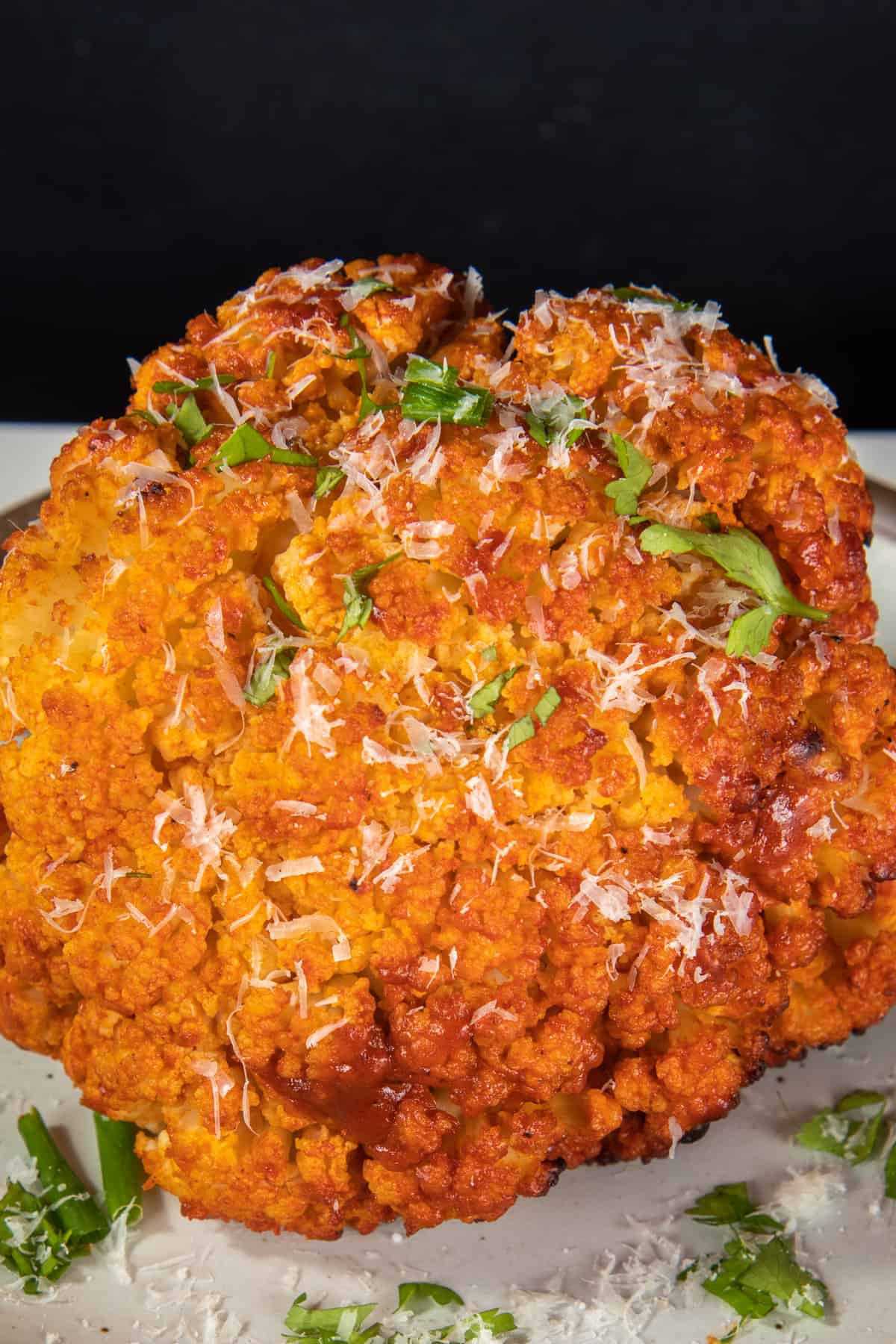
This post contains helpful tips and tricks! If you're in a rush, please use the "Jump to Recipe" below!
💭 Why you'll love this recipe
My friend introduced me to gochujang almost a decade ago and I've been hooked ever since. This recipe takes the fermented spicy goodness of gochujang and adds it to the perfect vehicle - roasted cauliflower. This makes for crispy, yet soft cauliflower, and an explosion of flavors in your mouth. One of the best vegan recipes I make at home all the time!
- Easy, wholesome recipe: This recipe is super simple and can be made in just an hour. You have multiple cauliflower heads? Just pop them all in the oven at the same time. Or make these air fryer cauliflower bites instead.
- Explore new flavor profiles: Adding a global flavor profile to local, seasonal ingredients leads to sustainable eating habits. And this Korean gochujang cauliflower is a perfect example of amazing umami flavour (and cauliflower is almost always in season)
- Make this as whole roasted cauliflower or use florets: The main recipe uses a whole head of cauliflower, but make sure to check out the section below that for florets!
📋 Ingredients and notes
You'll need a head of cauliflower, gochujang, soy sauce (or tamari, if you're gluten-free) along with tahini, garlic, lemon juice, olive oil, salt and pepper. You can garnish with fresh herbs or even cheese if you consume dairy products.
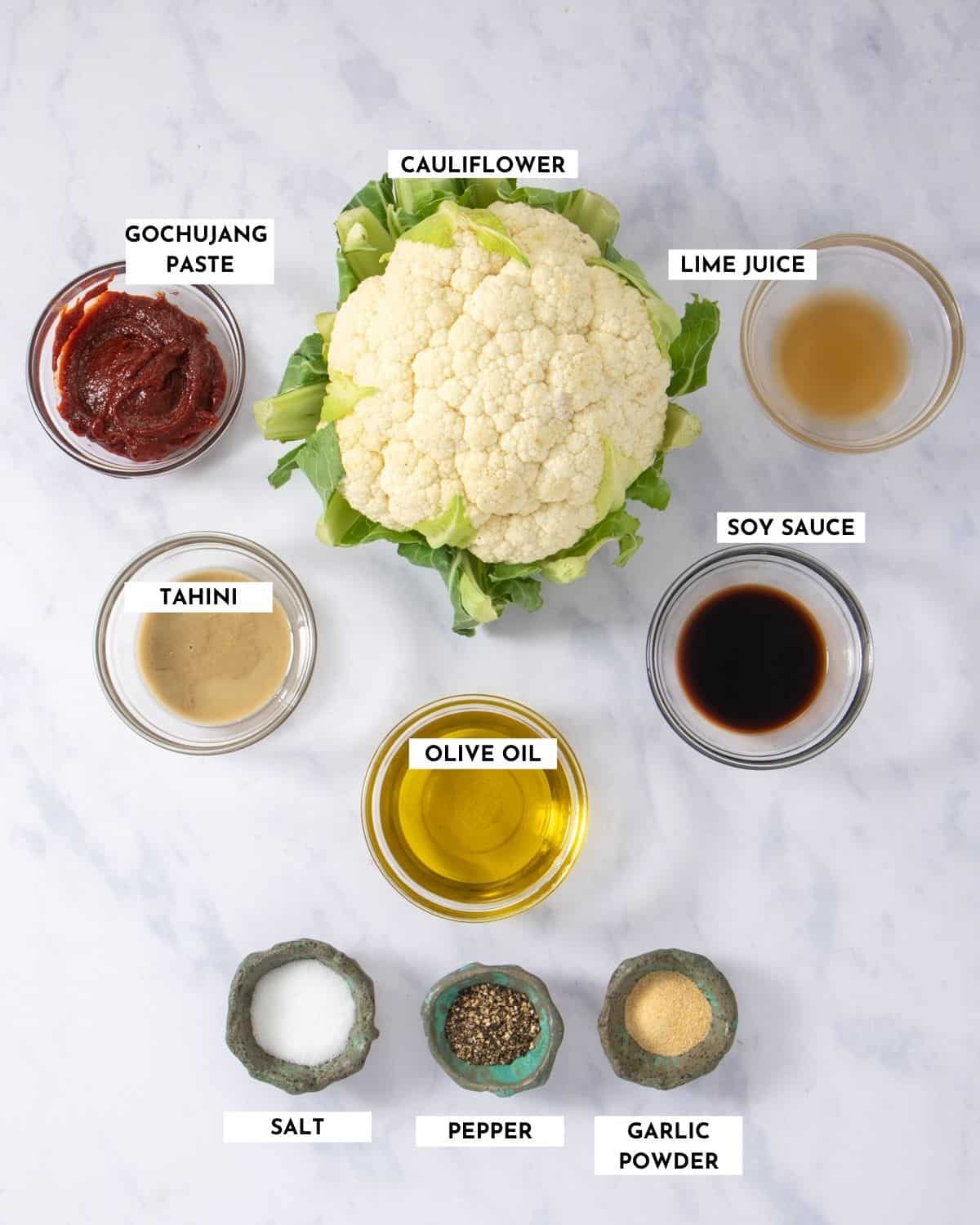
What is gochujang? Is it vegan?
Gochujang is a vegan, Korean chili paste that's made with glutinous rice, fermented soy beans and salt. Despite it's fiery red color, the flavor can range from sweet to spicy, making it the backbone of Korean cooking. I put gochujang on all my vegetables! It's the most delightful spicy umami bomb ever because it's essentially a fermented chili paste. Plus, it has all the ingredients for fantastic flavor which contribute to the perfect bite of gochujang cauliflower!
Notes and variations
- Add sesame oil: If you want to amp up the flavors a notch, you can add some sesame oil to the marinade.
- Add rice vinegar: Adding a bit of vinegar can help bring out more tart flavors and makes the glaze consistency a bit more fluid.
- Top with spring onions, green onion, or sesame seeds: These help add a bit of crunch to the cauliflower once you're done roasting them.
- Add red pepper flakes: If you want something a bit more spicy (though gochujang is already a bit spicy!) you can add red pepper flakes (or Korean gochugaru) to take it up a notch (if you really like spicy food!)
⏲️ Make whole roasted cauliflower
The base technique for making whole cauliflower roast is inspired by Ottolenghi's recipe.
- You first boil the cauliflower in salted water to start the cooking process.
- Once the cauliflower is soft (about 10-15 minutes) make sure to drain the water and blot it using a clean towel. This helps absorb extra moisture.
- You can keep or chop off the stem based on whether the cauliflower is able to stand on it's own and set aside in a large bowl.
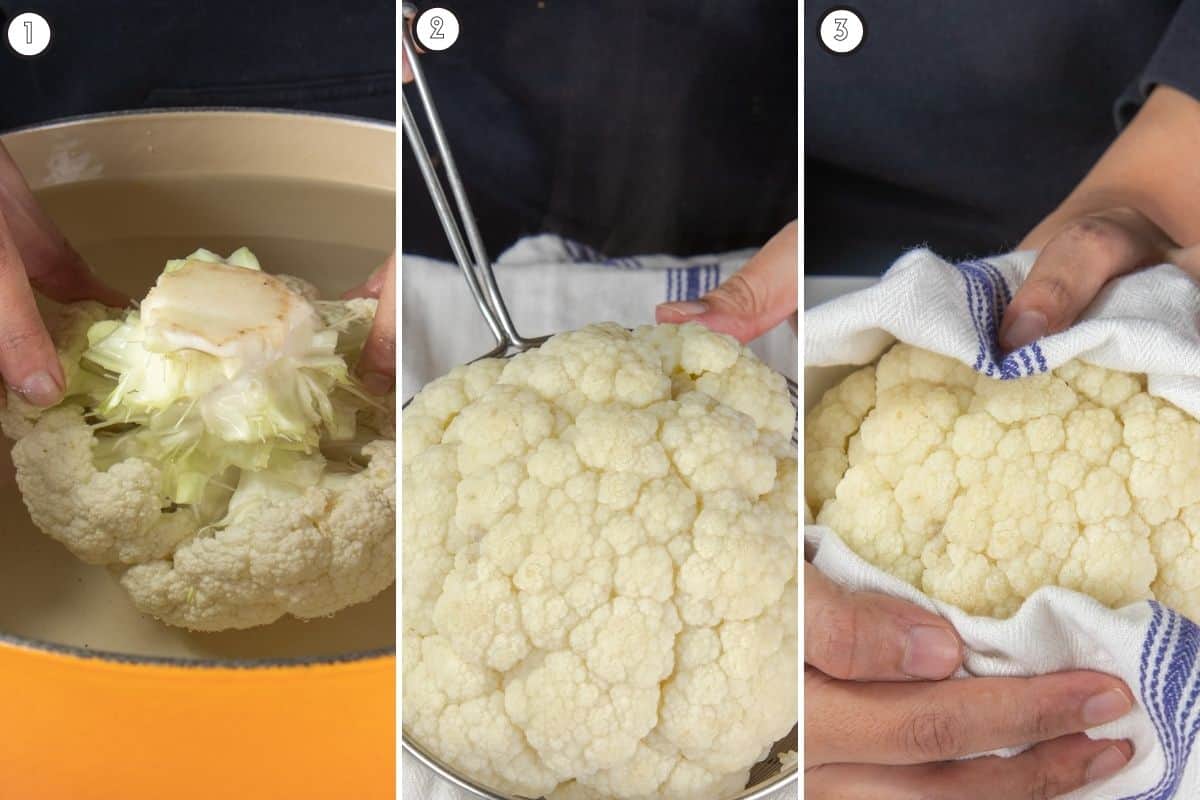
Make the sauce by mixing gochujang, soy sauce, tahini, olive oil, salt and pepper in a small bowl. Smear the cauliflower with this sauce, making sure to get the crevices. Blot out any excess and pop it into the oven at 425F for about 25 minutes.
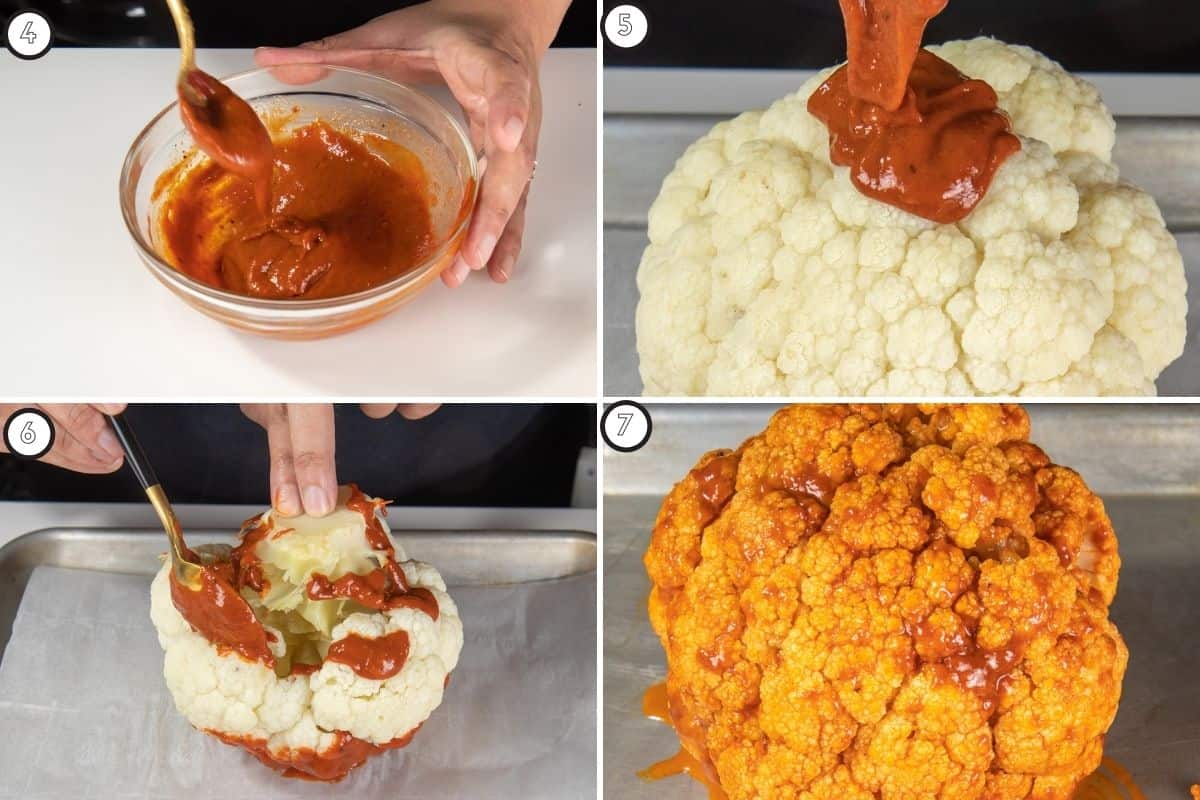
Optional: You can broil for about 30 seconds to get it crispy if you like, and garnish with fresh herbs, spring onion and/or cheese.
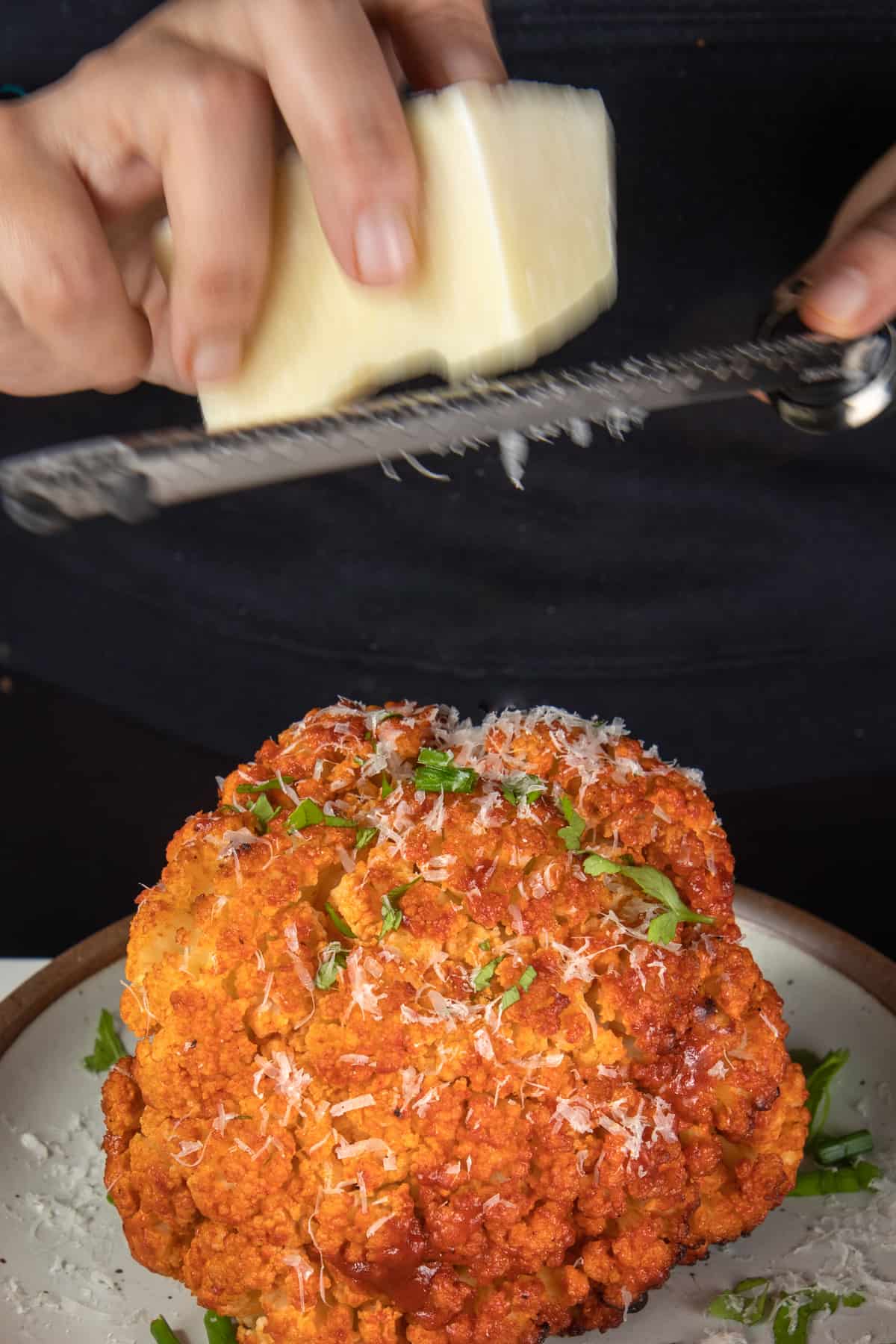
⏲️Make vegan gochujang cauliflower wings!
If you have cauliflower florets, the technique for making gochujang cauliflower wings is slightly different, but not by a whole lot. These can
- Toss the florets with olive oil, salt and pepper, and bake for 15 minutes at 425F. This releases excess water, making it less soggy.
- Make the marinade by mixing gochujang, soy sauce, tahini, olive oil, salt and pepper in a small mixing bowl.
- Blot excess water from florets and toss them in the sauce. If you want it ultra crispy, you can add breadcrumbs and/or chickpea flour.
- Spread out the florets on a baking sheet (or an air fryer tray or basket). You can use parchment paper if you want to make them extra crispy to your desired consistency.
- Pop it back in the oven at 425F for another 20 minutes, or in the air fryer for 15 minutes, tossing them or shaking them halfway through to make sure they're cooked evenly.
Don't forget to check out my Korean cauliflower tacos to use these up the next day, or this pav bhaji if you are looking for cauliflower recipes!
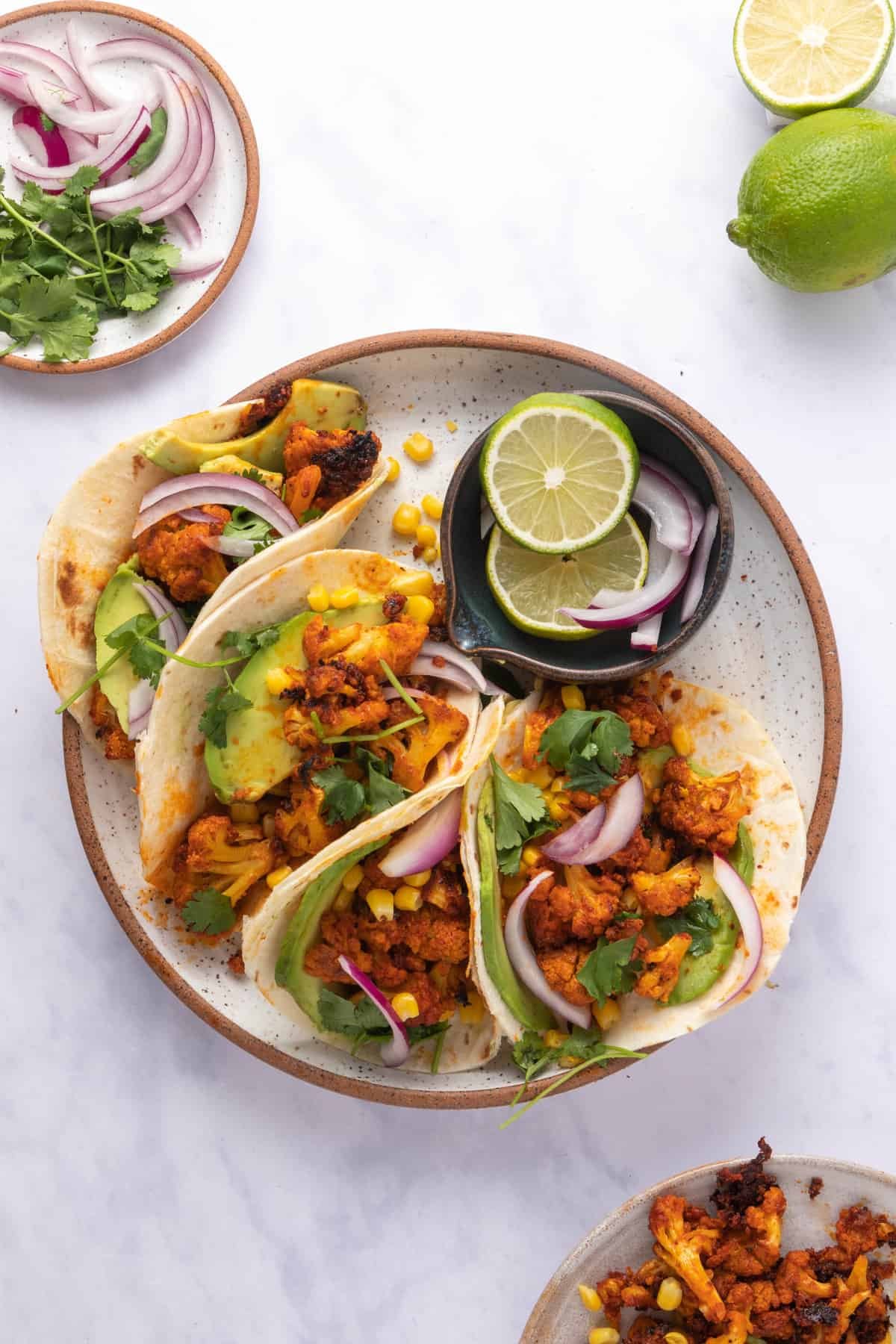
👩🏽🍳FAQs and top tips
Yes, you can mix a larger batch of the sauce and portion it or freeze till you're ready to make the roasted cauliflower.
Make sure you blot out all the water for the whole cauliflower head. If you're using florets, make sure that you're roasting them first and then blotting them before coating them in the sauce. Make sure you don't use too much sauce either! The longer you roast, the crispier it gets. You can also add some chickpea flour to the marinade or breadcrumbs on top to make it extra crispy as well.
Yes! Those substitutions should work.
🍴 Serving and storage suggestions
I serve whole roasted cauliflower as a family style dish. The florets, you can serve in a bowl with chopped scallions (add a creamy dip to tone down the spice!) or better yet: make gochujang cauliflower tacos or an easy fried rice bowls. I also love serving this as a healthy side dish on it's own to any main dish!
To store the cauliflower, place them in an airtight container and warm them up in an oven at 350F for 5-10 minutes. I prefer this instead of popping them in the microwave since it helps retain crispiness!
If you like this recipe, check out these easy Korean-inspired recipes:
If you tried this recipe, don't forget to comment and rate! ⭐⭐⭐⭐⭐
📖 Recipe
Spicy Korean Gochujang Whole Roasted Cauliflower
Ingredients
- 1 head of cauliflower, medium size, kept whole, washed
- 1 tablespoon Korean gochujang sauce, available at most Asian supermarkets - you can add as much as 2 tablespoons based on size of cauliflower!
- 1 tablespoon tahini sauce
- 1 tablespoon soy sauce
- 1 tablespoon fresh lemon juice, or lime juice
- 3 tablespoons olive oil
- 1 teaspoon garlic powder
- ½ teaspoon salt
- ½ teaspoon black pepper
Instructions
Whole Roasted Gochujang Cauliflower
- Preheat the oven to 425°F
- Boil water with salt in a pot large enough to submerge the full cauliflower. Chop off the excess leaves at the bottom, and place the cauliflower with the floret-side down in the water and boil for 5 to 10 minutes until the cauliflower is tender. Wrap in a clean, dry kitchen towel and set aside while you prepare the sauce - this will help absorb excess moisture from the cauliflower and ensure it's crispy!
- In a small mixing bowl, mix 1 tablespoon each of the gochujang, soy sauce, tahini, and lemon juice, along with 3 tablespoons of olive oil, 1 teaspoon of garlic powder, and half a teaspoon each of salt and pepper to make a sauce / glaze with a thick consistency.
- Either transfer the cauliflower to the mixing bowl, toss with the sauce evenly (make sure not to overcoat) or coat it evenly with your hand on a baking sheet. You could also sprinkle some breadcrumbs to make it extra crispy.
- Line a baking sheet with parchment paper and place the cauliflower on the sheet. Bake for about 25 minutes. Switch to broiler and broil for exactly 30 seconds (otherwise the top will burn!)
Gochujang Cauliflower Wings
- Toss the florets with 1 tablespoon of olive oil, and half a teaspoon each of salt and pepper. Bake for 15 minutes at 425°F. This releases excess water, which in turn makes it less likely to become soggy.
- In a small mixing bowl, mix 1 tablespoon each of the gochujang, soy sauce, tahini, and lemon juice, along with 2 tablespoons of olive oil, 1 teaspoon of garlic powder, and half a teaspoon each of salt and pepper to make a sauce / glaze with a thick consistency.
- Blot excess water from florets and toss them in sauce. If you want it ultra crispy, you can add breadcrumbs and/or chickpea flour to this mixture!
- Pop it back in the oven for another 20 minutes, tossing them halfway through to make sure they're cooked evenly. Serve as wings or in your favorite taco or rice bowl for maximum deliciousness!
Notes
- The amount of time it takes for the cauliflower to be cooked depends on the size of your pot, the size of the cauliflower and the strength of your stove! I suggest checking after 5 minutes to see if its fork-tender and then remove!
- Taste the sauce before you toss your cauliflower with it - if spicy, adjust with tahini or olive oil till it's to your liking. The sauce must taste delicious (though intense!)
- Make sure not to overcoat to avoid the risk of burning the sauce - you can always use excess sauce to coat the cauliflower after it comes out of the oven
- I've found it better to use my hands to toss the cauliflower vs. using a brush. Okay to get a bit dirty!
- If you want your cauliflower to be extra crispy, you can add some chickpea flour into the sauce or coat with breadcrumbs.
Nutrition
Note: This post was originally published on Jan 15, 2020 and updated on Dec 2 February, 2022 to include more detailed instructions and FAQs!






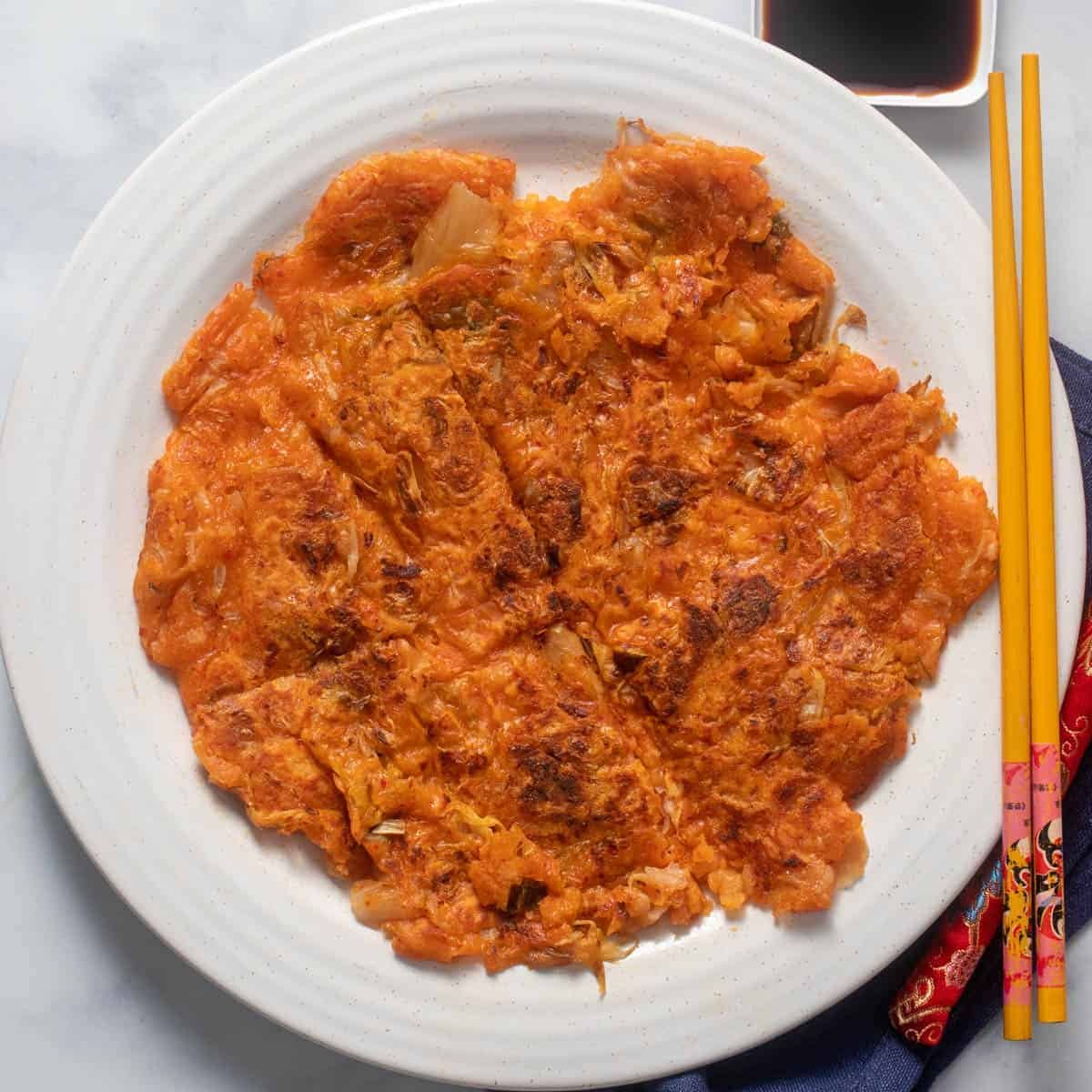
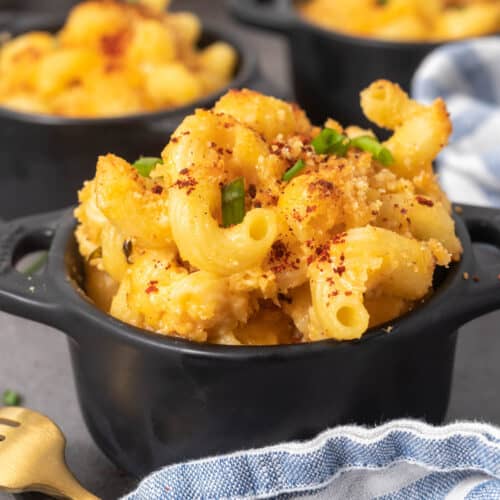
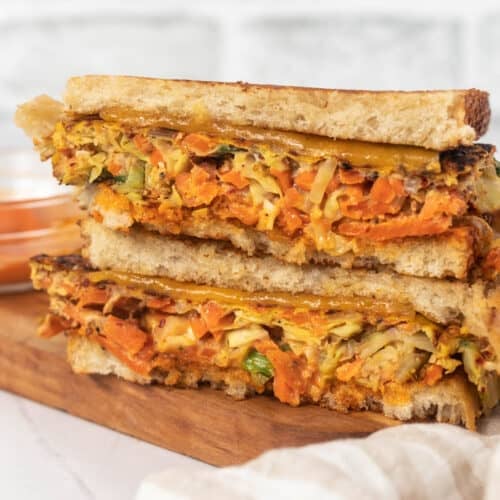









Is there a substitute for the oil if you're trying to eliminate oil from your diet?
Hi Carol, typically, I tend to use aquafaba (the brine from chickpea cans) as a substitute for oil in marinades. I have not tried it on this recipe, but don't see why it won't work!
So not quite sure about the prep for making the “wings.” Do you boil the florets like you would with the whole head, or is baking them first the only step before rubbing on marinade? Thanks!
Hi Deb - thanks for asking. If you're making the wings, no need to parboil beforehand. You just bake them first, and then toss them in marinade and bake again 🙂
This is a very tasty combo! I used it on cauliflower florets and mushrooms, roasted in the oven and added to a rice bowl. I think I will cut the spice a bit next time - just a personal preference. Great recipe.
Love that combo! The recipe is easily adjustable for spice tolerance, so I hope you love it even more next time!
I'd love to try this, but I really don't like to buy uncommon ingredients and have them sitting around not to be used again/often. Is there a substitute for gochujang sauce?
Hi Jackie! I've found that any hot sauce (if you can find something a bit thick) that would be great. You'll have to adjust the amount you use to make sure the marinade has the right consistency (i.e., not too watery!) But to be honest, gochujang keeps FOREVER! And it's a great marinade for so many things. So if you choose to just buy a small bottle of it, it's totally worth it.
This was delicious. I would suggest boiling the cauliflower a bit less so there is a bit more crunch to it. I served a wedge of this on top of a spinach salad. Fabulous. I will make this again.
Thank you Debbie! Glad to hear that - and great idea to boil a bit less to have more crunch!
This cauliflower is great! It comes out super tender, the tahini and soy sauce give it a ton of umami without being overpowering, and the gochujang gives it a nice balance of sweetness and spice. The coating has a great consistency, and nicely gets into all the crevices of the cauliflower. These are great on their own, and I’m looking forward to making tacos with them later!